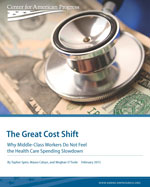Yay, another health care thread.
Assume the government (the very one that invaded Iraq and gave tax cuts out while the levees in New Orleans started developing cracks) decided to implement a public catastrophic coverage plan. The terms would be any medical expenses over $5000 a year per person would be covered by a public plan. Everyone who is a US citizen would be covered under this plan.
It seems a plan like that would be good because it would eliminate medical bankruptcies (if you get huge bills, you can pay them off over a 10-20 year period). Plus if pre-existing conditions were forced to be covered in the private market, it would allow more job mobility.
So how much would that plan cost? How much would it save?
Something like 70% of the country either has private insurance or is uninsured, the other 30% is on public plans so they do not count in this.
So catastrophic coverage for 210 million people. I’d assume (due to bulk purchasing power, lower administration and negotiation rates) that might come to about $1500 per person per year as a rough estimate. So $315 billion annual price tag, roughly.
However, how much would this save in private insurance premiums?
The average families premiums are $1100 higher due to cost shifting from the uninsured. So a catastrophic plan should lower costs for everyone else.
John Kerry had a plan in 2004 to cover all costs over $50,000 under a public plan. He claimed it would save $1000 per family per year in health insurance costs. Health costs are higher in 2010 though, no idea what the savings would be now.
http://www.ontheissues.org/2004/John_Kerry_Health_Care.htm
The plan would cost more in taxes, but save people more privately on private insurance, so it should even out on the whole. Plus it’d provide more security and mobility than our current system.
If the max private health insurance had to cover was up to a maximum of $5000 per person (assuming a top of the line private plan with no deductibles and co-pays that paid everything from $1-5000 a year), I’m guessing/hoping that private insurance would become dirt cheap. So whatever new taxes are levied would be offset by the private savings. An individual plan with a $1000 deductible and a 20/80 copay after that (from $1001-5000) would cost an insurance company a maximum of $3200 a year assuming the person maxes it out in a year. So premiums might only be $30-50/month per individual.
Plus it might be good for business by taking some of the insurance weight of the private market off of them. Of course those saving would be offset by new taxes.
With medicare set to bankrupt the treasury over the next 75 years, its not feasible. But it’d be better than what we have now.
